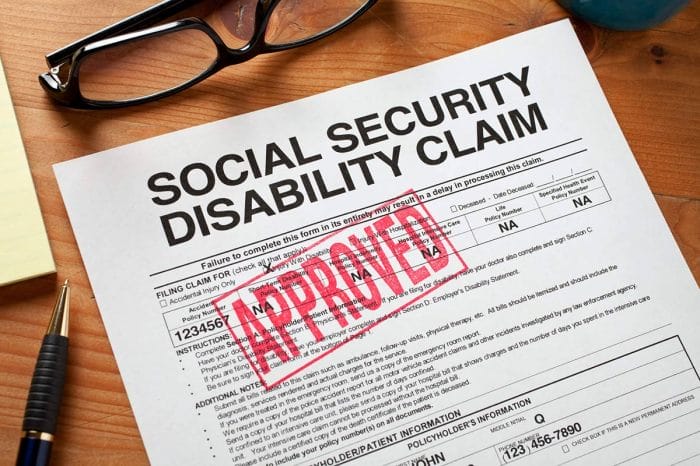Navigating the Social Security Disability Insurance (SSDI) program can be a daunting task, but with the right guidance and preparation, you can increase your chances of a successful application. This comprehensive guide delves into the intricacies of SSDI, providing essential tips and strategies to help you understand the program, gather the necessary evidence, and effectively communicate your case to the Social Security Administration.
From understanding the eligibility criteria and common qualifying conditions to gathering medical evidence and preparing for the interview, this guide covers every step of the SSDI process. We’ll also explore strategies for maintaining your benefits and appealing a denied claim, ensuring you receive the support you deserve.
Understanding Social Security Disability Insurance (SSDI)

Social Security Disability Insurance (SSDI) is a federal program that provides financial assistance to individuals who are unable to work due to a disability. It offers monthly benefits to eligible individuals who meet specific criteria, including having worked long enough in jobs covered by Social Security and having a disability that prevents them from performing substantial gainful activity.
Types of Disabilities Covered Under SSDI
SSDI covers a wide range of disabilities, both physical and mental. Some common types of disabilities that may qualify for benefits include:
- Musculoskeletal disorders (e.g., arthritis, back pain, joint pain)
- Cardiovascular conditions (e.g., heart disease, heart failure, high blood pressure)
- Neurological disorders (e.g., stroke, multiple sclerosis, Parkinson’s disease)
- Mental health conditions (e.g., depression, anxiety, schizophrenia)
- Cancer
- Chronic pain
- Blindness or low vision
- Deafness or hearing loss
The Application Process
To apply for SSDI benefits, individuals must file an application with the Social Security Administration (SSA). The application process involves gathering medical records, work history, and other supporting documentation to demonstrate the disability and its impact on the individual’s ability to work.
The SSA will review the application and make a decision on whether to approve or deny benefits. The approval process can take several months, and individuals may need to appeal the decision if their initial application is denied.
Common Conditions Qualifying for SSDI
Social Security Disability Insurance (SSDI) provides financial assistance to individuals who are unable to work due to a severe medical condition. Various conditions qualify for SSDI benefits, ranging from physical impairments to mental health disorders.
To be eligible for SSDI benefits based on a medical condition, the condition must meet specific criteria and be supported by appropriate documentation. These criteria include the severity of the condition, its expected duration, and its impact on the individual’s ability to work.
Musculoskeletal Disorders
Musculoskeletal disorders are among the most common conditions qualifying for SSDI benefits. These conditions affect the bones, muscles, joints, and connective tissues, causing pain, stiffness, and difficulty with movement.
Some common musculoskeletal disorders that may qualify for SSDI benefits include:
- Rheumatoid arthritis
- Osteoarthritis
- Fibromyalgia
- Degenerative disc disease
- Ankylosing spondylitis
To qualify for SSDI benefits based on a musculoskeletal disorder, the condition must be severe enough to prevent the individual from performing any substantial gainful activity (SGA). SGA is defined as work that generates income above a certain threshold set by the Social Security Administration (SSA).
Documentation required to support a claim for SSDI benefits based on a musculoskeletal disorder may include medical records, imaging studies, and work history.
Cardiovascular Conditions
Cardiovascular conditions are another common cause of disability and can lead to SSDI benefits. These conditions affect the heart and blood vessels, increasing the risk of heart attacks, strokes, and other complications.
Some common cardiovascular conditions that may qualify for SSDI benefits include:
- Coronary artery disease
- Heart failure
- Arrhythmia
- Congenital heart disease
- Hypertension
To qualify for SSDI benefits based on a cardiovascular condition, the condition must be severe enough to prevent the individual from performing any SGA. Documentation required to support a claim for SSDI benefits based on a cardiovascular condition may include medical records, electrocardiograms, and stress tests.
Mental Health Disorders
Mental health disorders can also qualify for SSDI benefits. These disorders can affect a person’s thoughts, feelings, and behavior, making it difficult for them to work.
Some common mental health disorders that may qualify for SSDI benefits include:
- Depression
- Anxiety disorders
- Bipolar disorder
- Schizophrenia
- Post-traumatic stress disorder (PTSD)
To qualify for SSDI benefits based on a mental health disorder, the condition must be severe enough to prevent the individual from performing any SGA. Documentation required to support a claim for SSDI benefits based on a mental health disorder may include medical records, psychological evaluations, and treatment records.
Gathering Medical Evidence
Establishing a compelling Social Security Disability Insurance (SSDI) claim hinges on presenting robust medical evidence that substantiates the severity and persistence of your disability. This evidence forms the backbone of your case, convincing the Social Security Administration (SSA) of your inability to engage in substantial gainful activity.
To bolster your claim, you must diligently gather and organize medical records, test results, and statements from healthcare providers that paint a comprehensive picture of your condition and its impact on your ability to work.
Medical Records
Request copies of all medical records pertaining to your disability from your healthcare providers. These records should include:
- Doctor’s notes and progress reports
- Hospitalization records
- Emergency room records
- Physical therapy or occupational therapy records
- Mental health records
- Diagnostic test results
- Imaging studies (X-rays, MRIs, CT scans)
- Laboratory test results
- Medication records
Statements from Healthcare Providers
In addition to medical records, obtain written statements from your healthcare providers that attest to the severity of your condition and its impact on your ability to work. These statements should include:
- A diagnosis of your condition
- A description of your symptoms and how they affect your daily life
- An assessment of your functional limitations
- A prognosis for your condition
- An opinion on your ability to work
Completing the SSDI Application

The SSDI application process can be daunting, but with careful preparation and attention to detail, you can increase your chances of a successful claim.
Before you begin, gather all necessary documents, including medical records, work history, and financial information. You can find a complete list of required documents on the Social Security Administration (SSA) website.
Application Sections
The SSDI application consists of several sections, each requiring specific information. Here are some key sections to pay attention to:
- Personal Information: Provide your full name, address, Social Security number, and contact information.
- Work History: List all jobs you’ve held in the past 15 years, including dates of employment, job titles, duties, and earnings.
- Medical Conditions: Describe your medical conditions in detail, including symptoms, treatments, and how they affect your ability to work.
- Activities of Daily Living: Describe how your medical conditions affect your ability to perform daily tasks, such as bathing, dressing, and cooking.
- Work Attempts: If you’ve tried to work despite your medical conditions, provide details about your attempts, including the types of jobs you’ve applied for and the reasons you were unable to continue working.
- Financial Information: Provide information about your income, assets, and expenses.
Potential Pitfalls
Avoid these common pitfalls that can delay or even deny your claim:
- Incomplete or Inaccurate Information: Ensure all sections of the application are completed accurately and thoroughly. Incomplete or inaccurate information can lead to delays or denial of your claim.
- Missing Documents: Submit all required documents along with your application. Missing documents can delay the processing of your claim.
- Unclear or Insufficient Medical Evidence: Provide clear and detailed medical evidence that supports your claim. Vague or insufficient evidence can weaken your case.
- Failure to Follow Up: Once you’ve submitted your application, follow up with the SSA to ensure they have received it and that all required documents are in order.
Strategies for Success
To increase your chances of a successful claim:
- Be Organized: Keep all your medical records and other supporting documents well-organized and easily accessible.
- Seek Professional Help: Consider seeking assistance from an attorney or advocate who specializes in SSDI claims. They can help you navigate the application process and ensure your claim is properly presented.
- Be Patient: The SSDI application process can take several months or even years. Be patient and persistent throughout the process.
Preparing for the SSDI Interview

The SSDI interview is a crucial step in the application process, where you can present your case and provide additional information to support your claim. Being prepared for the interview will help you effectively communicate your condition and limitations to the interviewer, increasing your chances of a favorable outcome.
Understanding the Purpose of the SSDI Interview
The SSDI interview is conducted by a representative from the Social Security Administration (SSA) to gather more information about your condition and how it affects your ability to work. The interviewer will review your application, medical records, and any other relevant documents.
They may also ask you questions about your work history, education, and daily activities.
Tips for Effectively Communicating Your Condition and Limitations
- *Be prepared to discuss your condition in detail. Provide a clear and concise explanation of your diagnosis, symptoms, and how they impact your ability to work. Use specific examples to illustrate your limitations.
- *Bring medical evidence to support your claim. This may include medical records, test results, and doctor’s notes. Make sure the evidence is organized and easy for the interviewer to review.
- *Be honest and forthright with the interviewer. Do not exaggerate your symptoms or limitations, as this could jeopardize your claim. Be truthful and provide accurate information to the best of your ability.
- *Dress appropriately and arrive on time for the interview. This shows the interviewer that you take the process seriously and are respectful of their time.
- *Consider bringing a support person to the interview. A friend, family member, or advocate can provide moral support and help you answer questions. They can also take notes and ensure that you understand the interviewer’s questions and responses.
Appealing a Denied SSDI Claim

If your initial application for Social Security Disability Insurance (SSDI) benefits is denied, you have the right to appeal the decision. The appeals process consists of several levels, each with its own procedures and deadlines.
It’s crucial to act promptly and follow the proper steps to increase your chances of success. Here’s an overview of the appeals process and guidance on how to present a strong case during the appeal.
Request for Reconsideration
The first level of appeal is called a request for reconsideration. This involves submitting a new application with additional evidence and arguments to support your claim. The reconsideration process typically takes several months, and you may need to wait for a hearing before a Social Security administrative law judge (ALJ).
When preparing for the reconsideration, focus on gathering additional medical evidence, such as updated medical records, test results, and statements from your doctors. You can also submit non-medical evidence, such as work history, education, and any other information that supports your disability claim.
Hearing Before an ALJ
If your reconsideration request is denied, you can request a hearing before an ALJ. The hearing is an opportunity to present your case in person and provide testimony and evidence to support your claim. You can also have witnesses testify on your behalf.
It’s essential to prepare thoroughly for the hearing. This includes organizing your evidence, practicing your testimony, and dressing professionally. You may also want to consider hiring an attorney to represent you at the hearing.
Appeals Council Review
If the ALJ denies your claim, you can appeal the decision to the Appeals Council. The Appeals Council is a panel of Social Security judges who review cases and make decisions on whether to grant or deny benefits. The Appeals Council typically takes several months to make a decision.
To appeal to the Appeals Council, you must file a written request within 60 days of receiving the ALJ’s decision. The Appeals Council may grant your request for review, deny your request, or send your case back to the ALJ for further review.
Federal Court Review
If the Appeals Council denies your claim, you can file a lawsuit in federal court. This is the final level of appeal in the SSDI process. To file a lawsuit, you must file a complaint with the U.S. District Court within 60 days of receiving the Appeals Council’s decision.
Federal court review of SSDI claims is a complex and time-consuming process. It’s essential to consult with an attorney if you’re considering filing a lawsuit.
Maintaining SSDI Benefits

Maintaining eligibility for Social Security Disability Insurance (SSDI) benefits requires ongoing compliance with program regulations and periodic reviews by the Social Security Administration (SSA). Understanding these requirements and following them diligently can help ensure uninterrupted benefits.
Reporting Changes
Beneficiaries must promptly report any changes that may affect their eligibility for SSDI benefits. These include:
- Improvements in medical condition.
- Changes in income, such as earnings from work or receipt of other government benefits.
- Changes in living arrangements, such as moving to a nursing home.
- Changes in marital status, such as marriage, divorce, or death of a spouse.
Failure to report changes can result in overpayment of benefits, which may need to be repaid.
Periodic Reviews
The SSA conducts periodic reviews to assess ongoing eligibility for SSDI benefits. These reviews typically involve a review of medical records and a functional capacity assessment to determine if the beneficiary’s condition has improved to the point where they can engage in substantial gainful activity (SGA).
Strategies for Staying Compliant
To stay compliant with SSDI regulations and avoid benefit termination, beneficiaries should:
- Keep detailed medical records and attend all scheduled appointments with healthcare providers.
- Report all changes in condition or income promptly to the SSA.
- Cooperate with the SSA during periodic reviews and provide all requested information.
- Seek legal advice if they receive a notice of termination of benefits.
Resources for SSDI Applicants and Beneficiaries
Navigating the SSDI process can be challenging, but there are numerous resources available to provide support and guidance. These resources include government agencies, advocacy organizations, and online platforms.
Government agencies play a crucial role in administering and overseeing the SSDI program. The Social Security Administration (SSA) is the primary agency responsible for processing SSDI claims and providing benefits to eligible individuals. The SSA has a network of local offices across the country where individuals can apply for SSDI, obtain information, and receive assistance.
Advocacy Organizations
Several advocacy organizations are dedicated to supporting individuals with disabilities and helping them access SSDI benefits. These organizations provide a range of services, including legal assistance, representation at hearings, and advocacy on behalf of SSDI applicants and beneficiaries.
- National Organization of Social Security Claimants’ Representatives (NOSSCR): NOSSCR is a professional organization representing attorneys and advocates who specialize in SSDI claims.
- National Disability Rights Network (NDRN): NDRN is a coalition of disability rights organizations that provides advocacy, legal assistance, and resources to individuals with disabilities.
- Social Security Works: Social Security Works is a non-profit organization that advocates for expanding and strengthening Social Security programs, including SSDI.
Online Resources
In addition to government agencies and advocacy organizations, there are numerous online resources available to provide information and support to SSDI applicants and beneficiaries. These resources include websites, blogs, and online forums where individuals can connect with others who are going through the SSDI process.
- Social Security Administration (SSA) website: The SSA website provides comprehensive information about SSDI, including eligibility criteria, application procedures, and the appeals process.
- Disability Benefits Help: Disability Benefits Help is a website that provides information and resources to help individuals apply for and manage their SSDI benefits.
- Social Security Disability Forum: The Social Security Disability Forum is an online community where individuals can connect with others who are applying for or receiving SSDI benefits.
SSDI and Work

If you are receiving Social Security Disability Insurance (SSDI) benefits, you may be concerned about how working will affect your benefits. This guide will explain the concept of Substantial Gainful Activity (SGA) and how it affects SSDI benefits. It will also discuss options for working while receiving SSDI benefits, including special work incentives programs.
Substantial Gainful Activity (SGA)
The Social Security Administration (SSA) defines Substantial Gainful Activity (SGA) as work that involves performing significant physical or mental activities for pay or profit. The SSA considers several factors in determining whether your work is SGA, including the type of work you do, the amount of time you spend working, and the amount of money you earn.
For 2023, the SGA limit is $1,470 per month for individuals and $2,460 per month for blind individuals. If you earn more than the SGA limit, the SSA may consider you to be engaged in SGA and may suspend or terminate your SSDI benefits.
Options for Working While Receiving SSDI Benefits
There are several options available to individuals who want to work while receiving SSDI benefits. These options include:
- Trial Work Period: A trial work period is a period of time during which you can test your ability to work without losing your SSDI benefits. During the trial work period, you can earn up to the SGA limit without your benefits being affected.
- Extended Period of Eligibility: After you complete your trial work period, you may be eligible for an extended period of eligibility. During this period, you can continue to work and earn more than the SGA limit without losing your benefits. However, if you have earnings that exceed a certain amount, your benefits may be reduced.
- Special Work Incentives Programs: The SSA offers several special work incentives programs that can help you transition back to work while receiving SSDI benefits. These programs include the Ticket to Work program, the Work Incentives Planning and Assistance (WIPA) program, and the PASS program.
SSDI and Other Government Benefits

Social Security Disability Insurance (SSDI) is a government program that provides monthly benefits to individuals who are unable to work due to a disability. However, it is not the only government program that offers financial assistance to individuals with disabilities.
In this section, we will compare SSDI with other government programs that provide similar benefits, such as Supplemental Security Income (SSI) and veterans’ benefits. We will also identify potential overlaps and coordination issues between these programs.
SSI
Supplemental Security Income (SSI) is a federal program that provides monthly benefits to individuals with disabilities who have limited income and resources. To be eligible for SSI, an individual must meet certain income and asset limits. Unlike SSDI, SSI is not based on work history.
Instead, it is based on financial need.
There is some overlap between SSDI and SSI. Individuals who receive SSDI benefits may also be eligible for SSI benefits if their income and resources are below the SSI limits. However, there are some important differences between the two programs.
For example, SSDI benefits are based on a person’s work history, while SSI benefits are based on financial need. Additionally, SSDI benefits are typically higher than SSI benefits.
Veterans’ Benefits
Veterans’ benefits are available to individuals who have served in the military. These benefits may include disability benefits, pension benefits, and health care benefits. The eligibility requirements for veterans’ benefits vary depending on the specific benefit. However, in general, veterans must have served a certain amount of time in the military and must have been discharged under honorable conditions.
There is some overlap between SSDI and veterans’ benefits. Veterans who are disabled as a result of their military service may be eligible for both SSDI benefits and veterans’ benefits. However, there are some important differences between the two programs.
For example, SSDI benefits are based on a person’s work history, while veterans’ benefits are based on military service. Additionally, SSDI benefits are typically higher than veterans’ benefits.
Coordination Issues
There are a number of potential coordination issues between SSDI, SSI, and veterans’ benefits. For example, an individual who receives benefits from one program may be required to report those benefits to the other programs. This can lead to delays in processing claims and overpayments.
Additionally, an individual who receives benefits from multiple programs may be subject to different eligibility requirements and reporting requirements. This can be confusing and difficult to manage.
To address these coordination issues, the Social Security Administration (SSA) and the Department of Veterans Affairs (VA) have developed a number of agreements and procedures. These agreements and procedures are designed to ensure that individuals who are eligible for benefits from multiple programs receive those benefits in a timely and efficient manner.
Closure

Remember, applying for SSDI is a journey, not a race. By following the tips and strategies Artikeld in this guide, you can navigate the process with confidence and increase your chances of securing the benefits you need. The path to SSDI approval may have its challenges, but with perseverance and the right guidance, you can overcome them and secure the financial support you deserve.
Common Queries
What is the most common reason for SSDI claim denials?
Incomplete or insufficient medical evidence is the most common reason for SSDI claim denials. Ensure you provide comprehensive medical records, test results, and statements from healthcare providers that clearly document your disability and its impact on your ability to work.
How long does it typically take to process an SSDI application?
The processing time for SSDI applications can vary widely, depending on factors such as the workload of the Social Security Administration and the complexity of your case. On average, it can take several months or even a year to receive a decision.
Can I work while receiving SSDI benefits?
Yes, you can work while receiving SSDI benefits, but there are limitations. The Social Security Administration uses a concept called Substantial Gainful Activity (SGA) to determine if your work activity is substantial enough to affect your benefits. In 2023, the SGA limit for individuals is $1,470 per month ($2,460 for individuals who are blind).
What are my options if my SSDI claim is denied?
If your SSDI claim is denied, you have the right to appeal the decision. The appeals process involves several levels, starting with a reconsideration by the Social Security Administration. If the reconsideration is unsuccessful, you can request a hearing before an administrative law judge.
You can also appeal the decision of the administrative law judge to the Appeals Council and, if necessary, to the federal courts.



